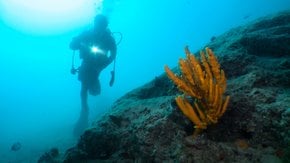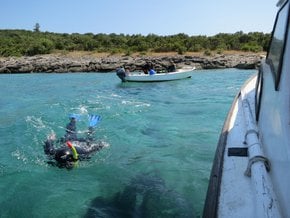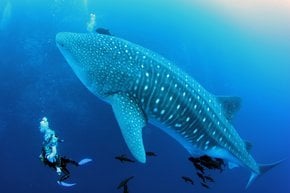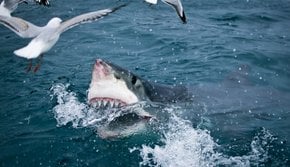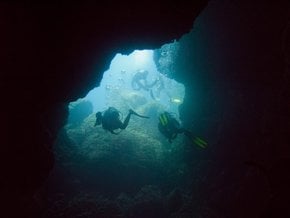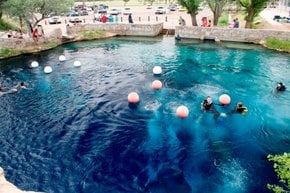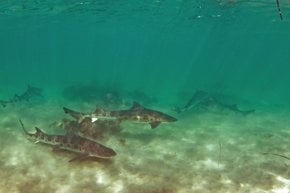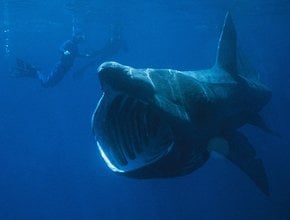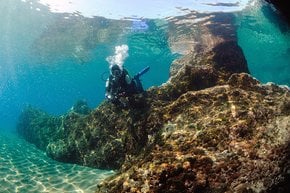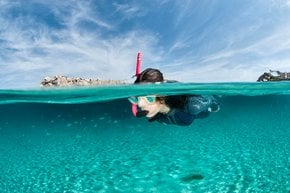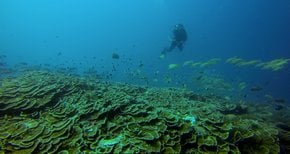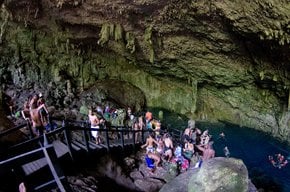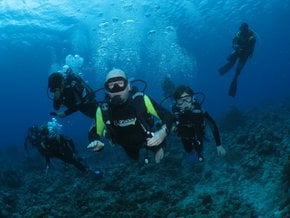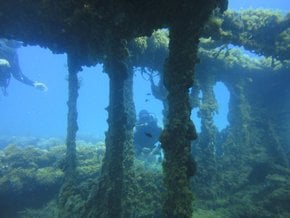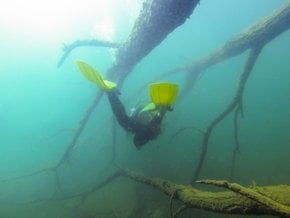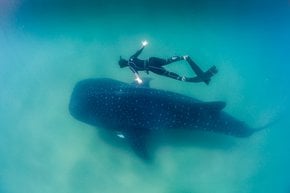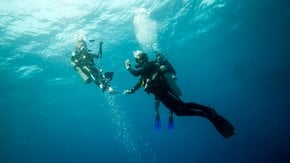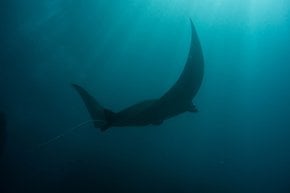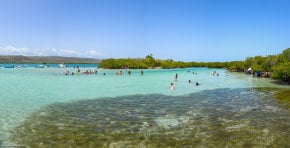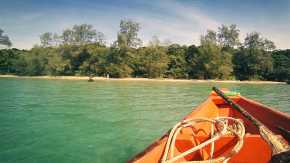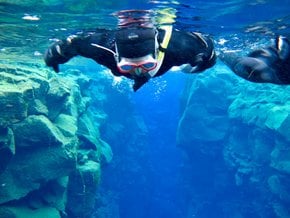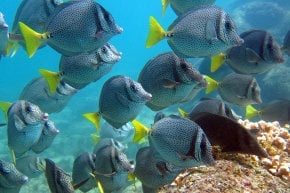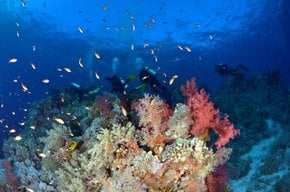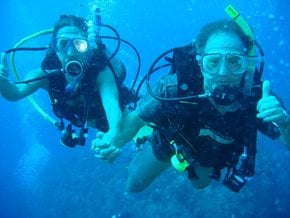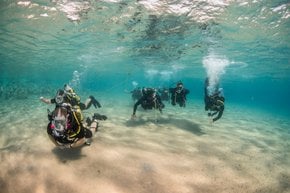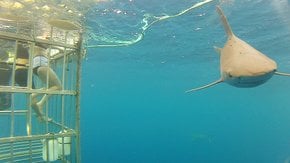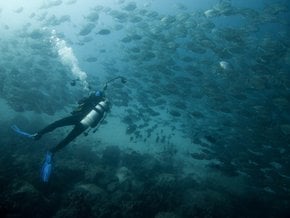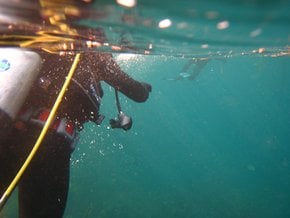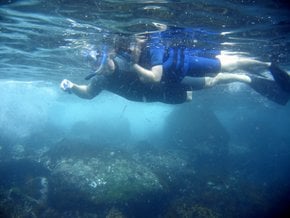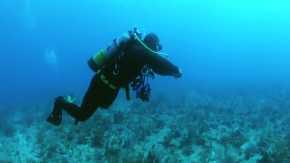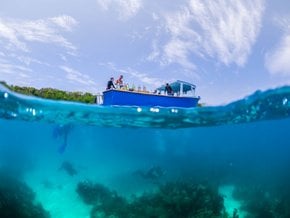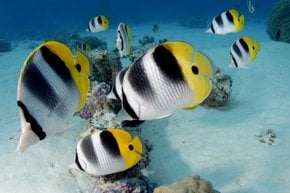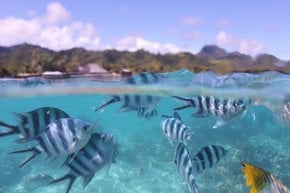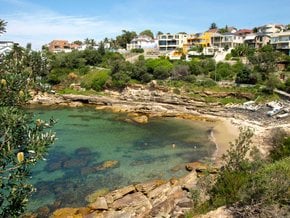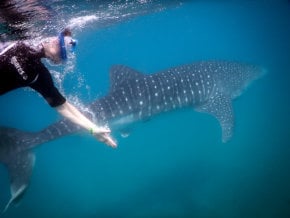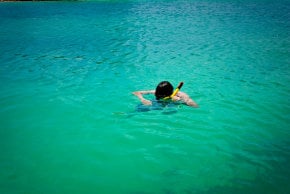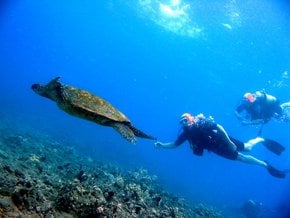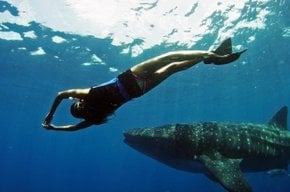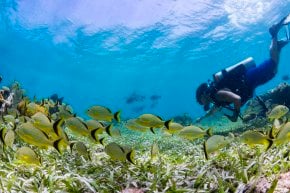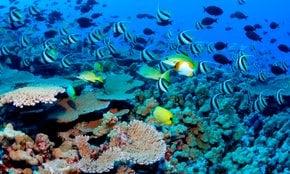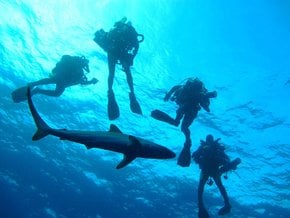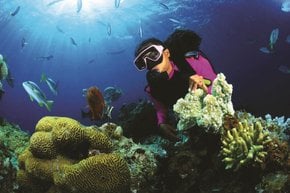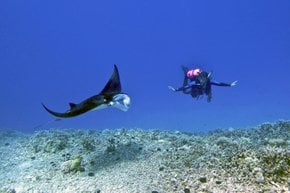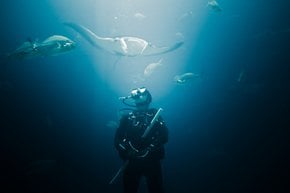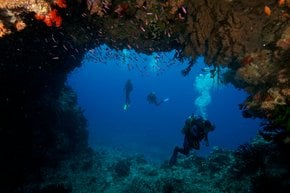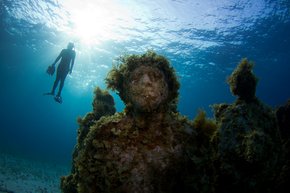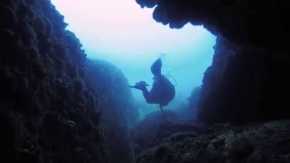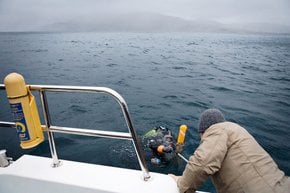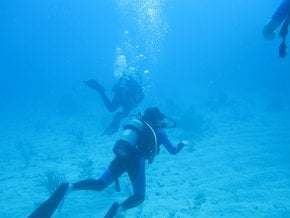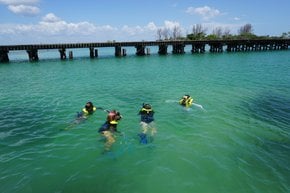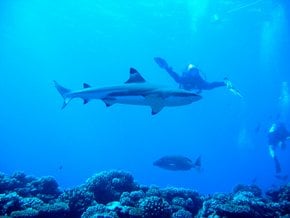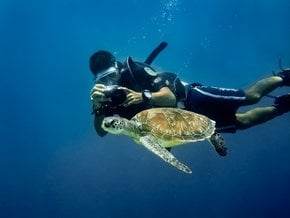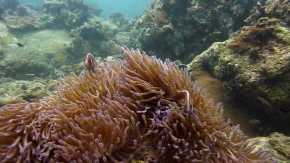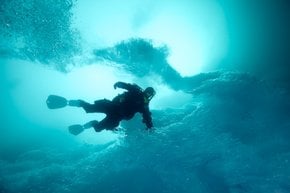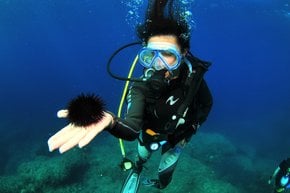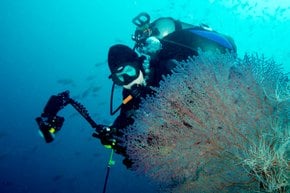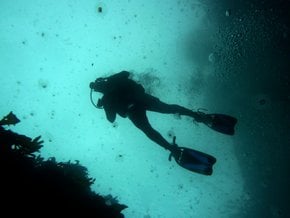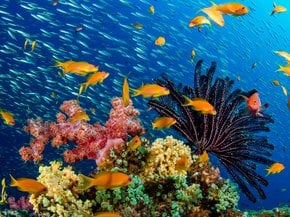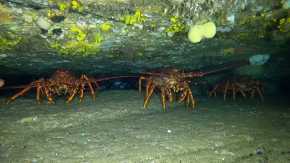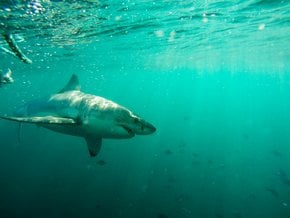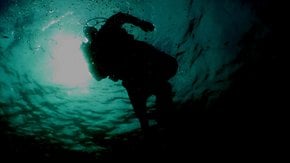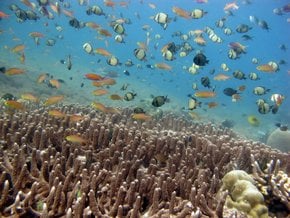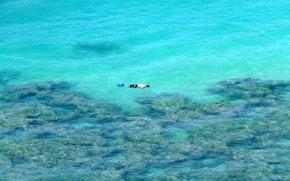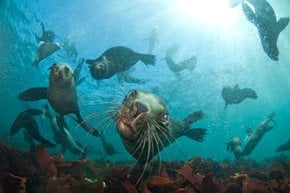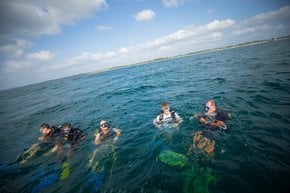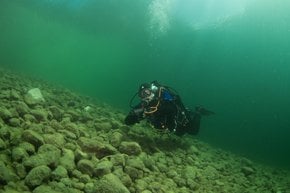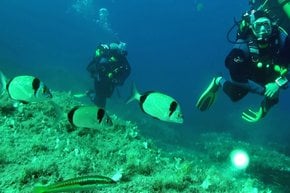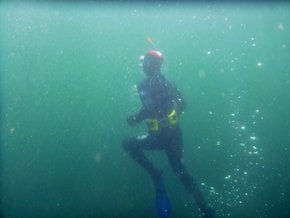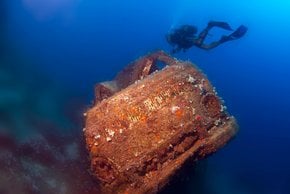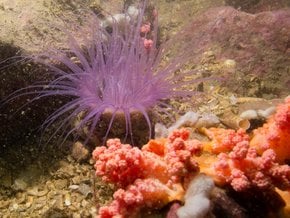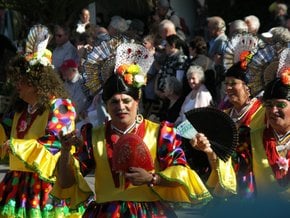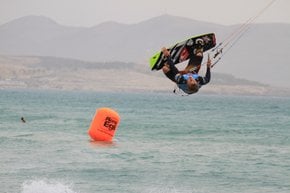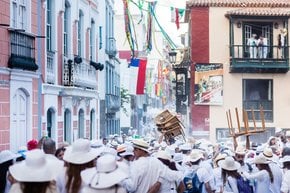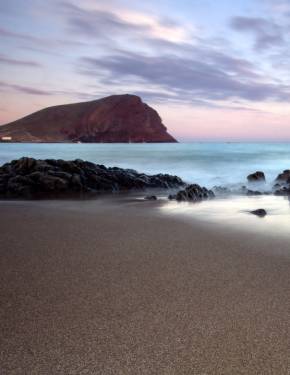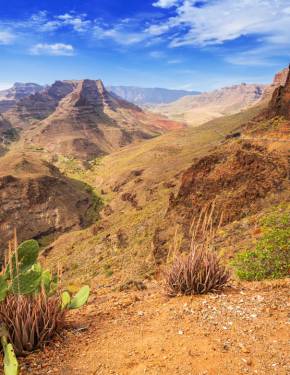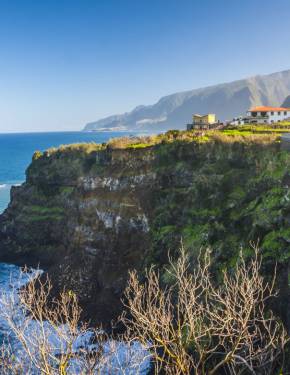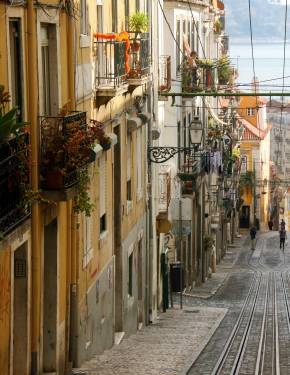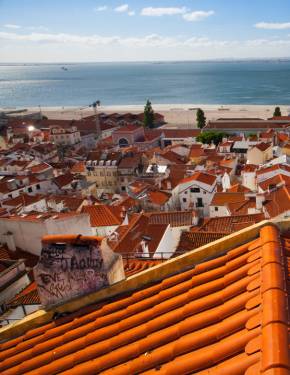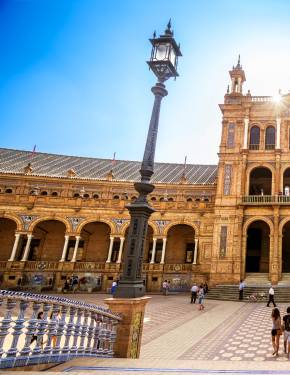If you are not afraid of giant fish and looking for some closer contact with them, try diving with manta rays. These are the largest of all rays. The triangular shape of the body with "wings" can reach a width of seven meters, and they can weigh up to 1,400 kg. Their lifespan is about 50 years, sometimes up to 100 years. They feed mostly on plankton so nothing to worry about.
Manta rays are extremely rare, but if you get lucky, they can be met in “cleaning stations” near the reef, where they remove small parasites from their bodies. Manta rays also like to swim near shipwrecks. Moreover, they can be seen by torchlight while feeding in the harbours at night.
These creatures are not bothered by human presence, but you should remember not to disturb them while feeding or cleaning.
Meeting these large flying ocean inhabitants will let you experience something unforgettable. You'll have more chances to meet them while diving in the waters of Canaria from September till November.
Practical info
When is the best time to see manta rays in the Canary Islands?
Manta rays can be spotted in the Canary Islands between September to November, with increased chances of sightings. They are often seen near the reef's cleaning stations and near shipwrecks or harbors where they feed at night. These creatures are habituated to humans, but divers must not disturb them while feeding or cleaning in their natural habitat. Show more
Where can you find manta rays while diving in the Canary Islands?
Manta rays thrive in the waters surrounding the Canary Islands, with Tenerife being a prominent location. They are often found in reef cleaning stations, harbor areas, and near shipwrecks. Care must be taken to avoid disturbing them while they feed or clean, but otherwise, they are not hazardous to human beings. Show more
What is the size and weight of an average manta ray?
Manta rays are the most giant rays found globally, with wingspans stretching up to seven meters and weights of 1,400 kg. They have a lifespan of up to 100 years, and they feed on 60 kg of plankton daily. These creatures gather in groups while feeding and are prominent in the Canary Islands' waters. Show more
How do manta rays feed, and what is their diet?
Manta rays feed by opening their mouths and filtering planktons, small fish, and crustaceans from the water. They consume approximately 60 kg of their diet per day and hunt in groups. They can be observed feeding around harbors at night and are common in reef cleaning stations and shipwreck areas in the Canary Islands. Show more
Is it safe to swim with manta rays, and what are the precautions to be taken?
Manta rays pose no risk to humans, and they are not known to attack them. These creatures are accustomed to humans, so divers can swim with them while taking care not to disturb them while they feed or clean. It is suggested to dive with a professional guide who can advise on the appropriate protocols and not harass these creatures in their habitat. Divers must refrain from chasing or touching manta rays and maintain a cautious distance. Show more
